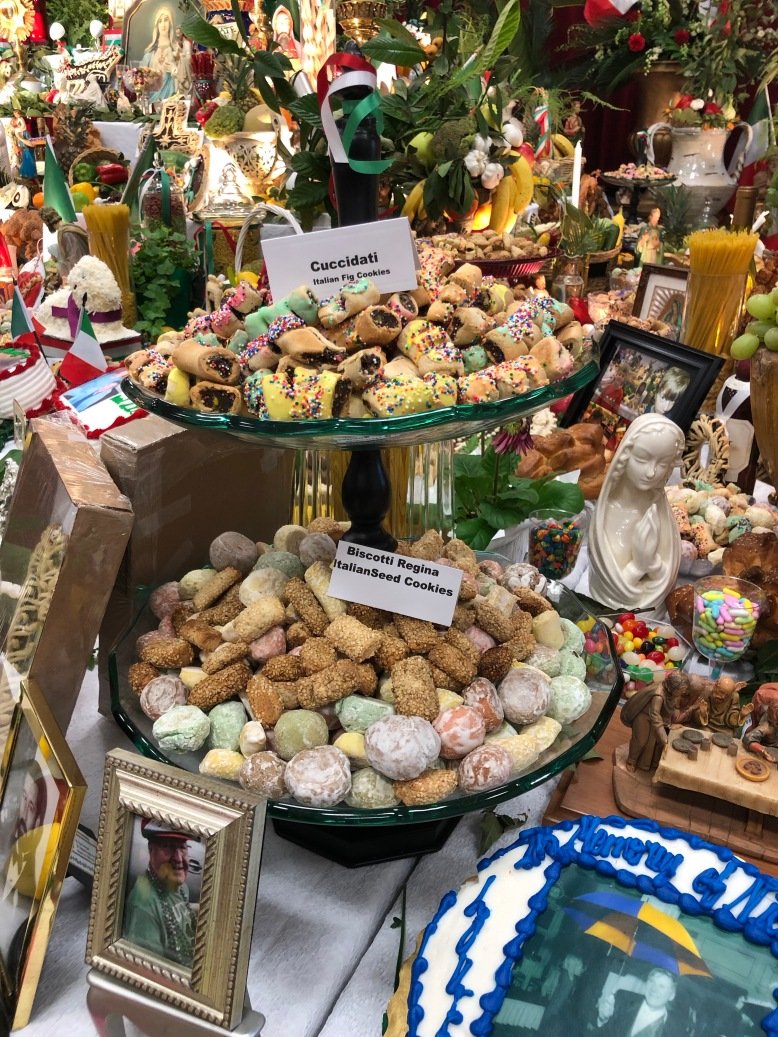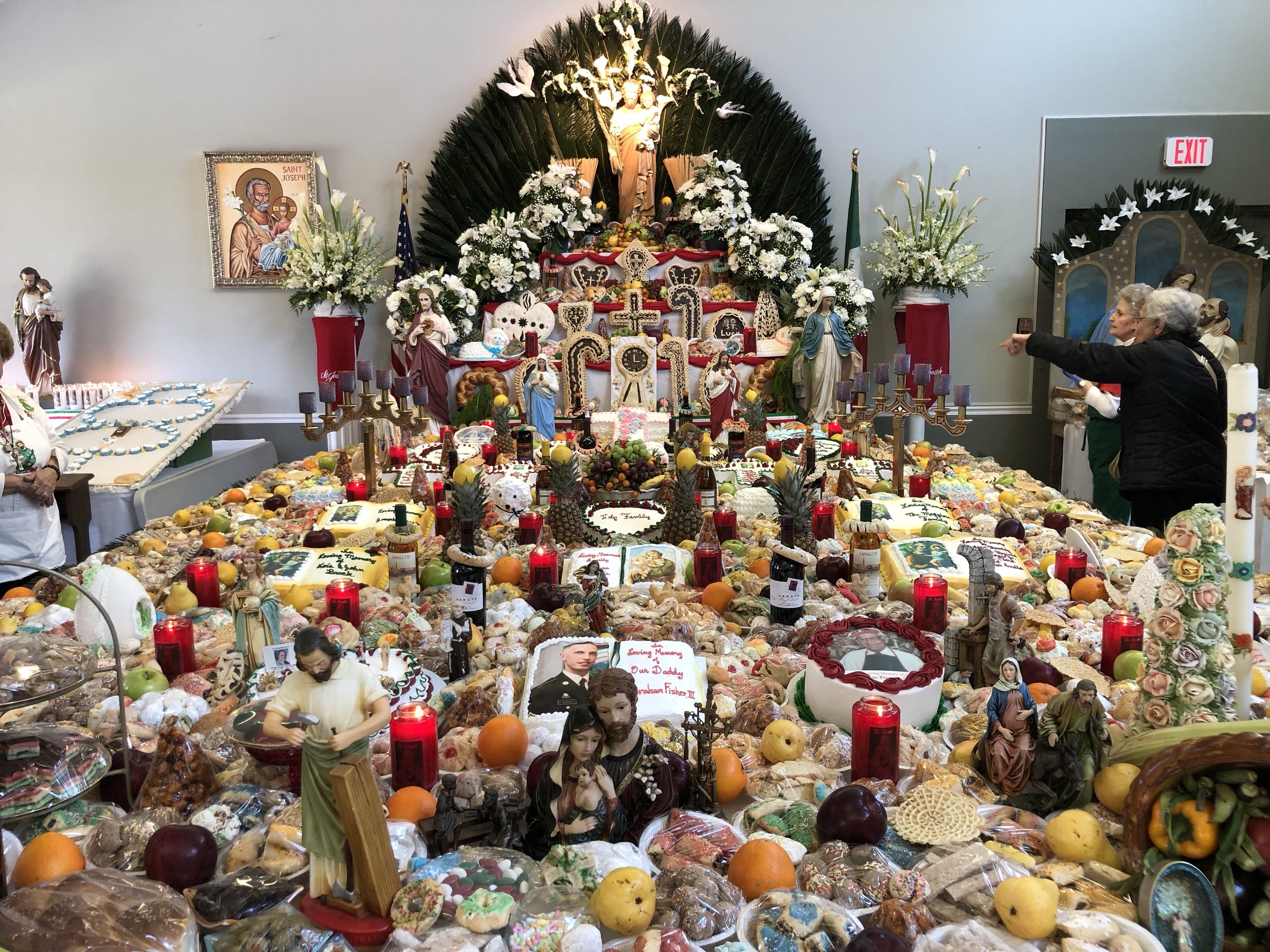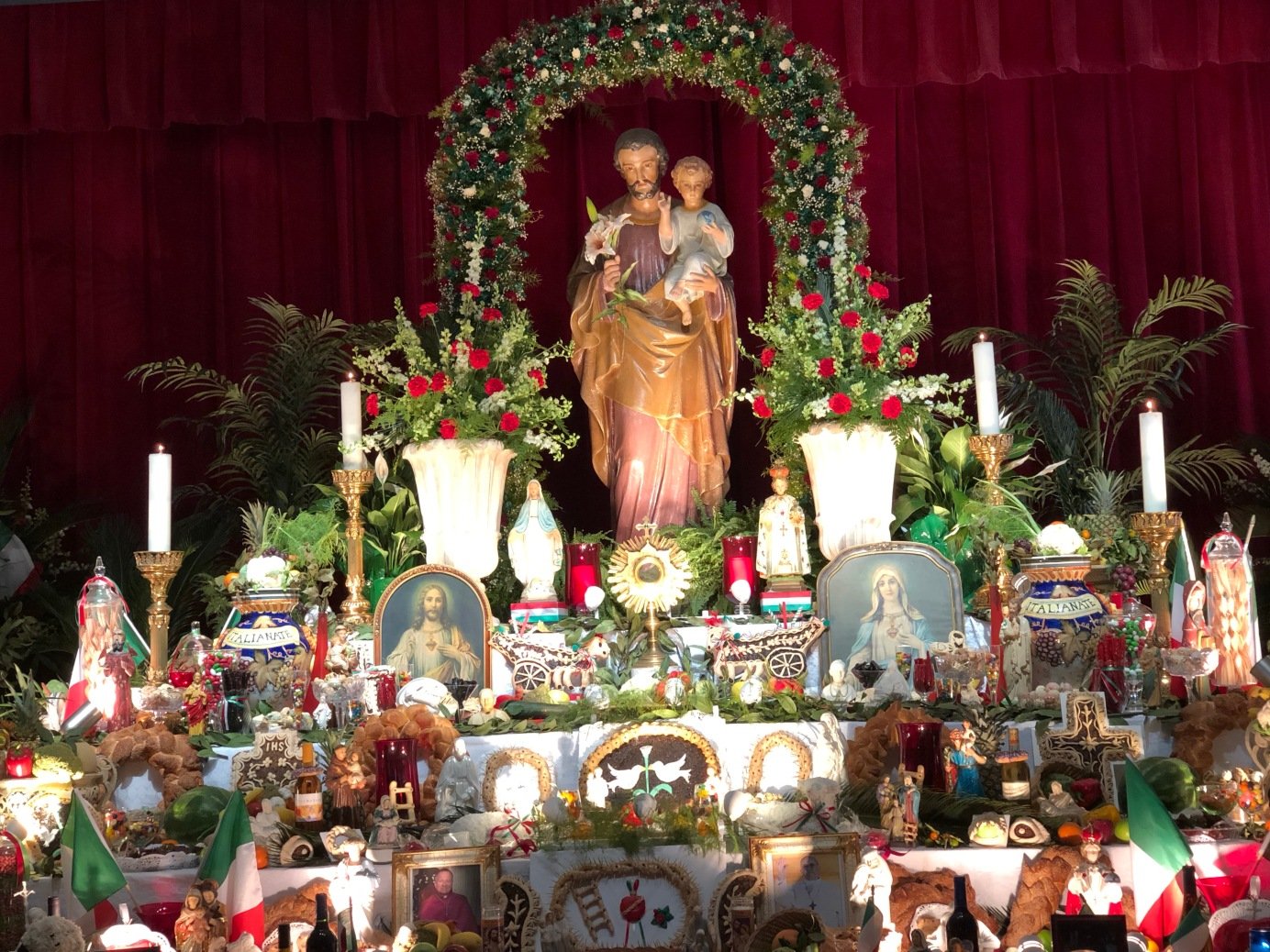Related Links
World War II was a pivotal time in the history of women in the workplace. In the novel, Rose and her best friend Marie work in war-time jobs at the Higgins Shipyard, which had an integrated workforce—unusual in those days in the South. Here’s more about the role of women during the war. New Orleans writer John Pope combed through some oral histories at the National WWII Museum for this portrait of the many women who worked in non-traditional jobs during the war. Here’s a link to his September 24, 2020 story.
The Feast of Saint Joseph, celebrated on March 19, is important in many cultures, as it honors the patron saint of families, workers, and the “good death”–all important themes in my book. The Sicilian-American community in New Orleans has taken the celebration to a high art. Check out the photos below from my tour of New Orleans area altars in 2019. Read more about the tradition here. And on a related note, the beautiful book cover for The Italian Prisoner is from New Orleans-based artist Deedra Ludwig’s painting called “Capistrano.” Saint Joseph’s Day is also the day the swallows return to Capistrano, so it’s just too perfect.
Like most immigrant groups, Italians and Sicilians faced cruel discrimination as they arrived in the U.S. seeking a better life. By the 1940s, many had assimilated and taken positions of power and influence in politics, business, and society. When the war broke out, old prejudices flared up. Some German and Italian U.S. residents were classified as “enemy aliens” and some were even detained during the early days of the war, though nothing on the scale of the shameful internment of Japanese-Americans. For a deep dive into Italian Internment During WWII, here’s a great talk given by Humanities Professor Laura Ruberto of Berkeley City College. More on the topic here.
The West Bank Historical Society’s March 2021 newsletter (page 22) The Algerine has a great write-up on the late Sal Serio and the American-Italian Research Library. Mr. Sal was instrumental in helping me unlock the fascinating stories of the Jackson Barracks POWs and was an invaluable research partner. An expert genealogist, he also helped track down the descendants, and was an ardent cheerleader and promoter of the novel and the backstory. I miss him and will be forever grateful to have gotten a chance to work with him.
In the novel, Rose’s family runs a grocery store. Here’s a great piece about the history of Sicilian corner groceries in New Orleans, featuring Sal Serio, of course.
Here’s an excerpt from Justin Nystrom’s Creole Italian in the Southern Foodways Alliance’s on-line journal. It’s a good history of the Sicilian French Quarter.
I was thinking about writing a blog post about the parallels between the COVID19 crisis and life on the New Orleans home front during World War II. Luckily, the National WWII Museum’s Kim Guise did it for me here in 64 Parishes magazine.
While you’re waiting for the sequel to The Italian Prisoner, check out this new website under development to help readers find their next book in new and innovative ways (while making the search part of the fun). Shepherd asks authors to recommend their favorite books around a topic, theme, or mood and then connect the recommendations in unique ways. They just launched a new section where you can browse books and book lists related to World War 2, for example, and from there, you can visit pages with book recommendations about related topics. They're looking for more readers to help with the development of the AI that drives the site. Find out more here.
Rose works as a bookkeeper at Higgins Industries. Here’s a link to read more about Andrew Jackson Higgins and the boats that helped win World War II. And here’s a great little mini-documentary on Higgins’ role during the war.
The World War II era has been burnished over time in the American psyche, and for good reason. But it was also a time of unmitigated racism manifested in Jim Crow laws, cruel segregation, and violence against African-Americans. Even Nazi POWs were appalled at the treatment of African-Americans in the U.S.. Heather Gilligan’s Medium post tells one story.
Sicilian-American Jazzman Louis Prima makes an appearance in the novel. Here’s an article with a little more background on him, and another from New Orleans writer Michael Tisserand about one of my favorite songs. And here’s a link to “The Wildest” a fabulous documentary about Prima’s life.
Rose spends a lot of time on streetcars, which criss-crossed New Orleans before being mostly removed in the late 1940s as the automobile became ascendant. Here’s a good article by geographer Richard Campanella. And here’s a photo of what North Rampart Street would have looked like as Rose made her way home from work.
PHOTO COURTESY THE HISTORIC NEW ORLEANS COLLECTION/ CHARLES FRANCK COLLECTION
To check out some photographs that inspired various aspects of the book, click here.




